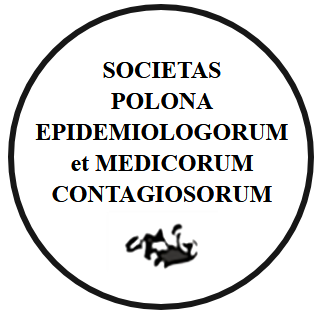ABSTRACT
INTRODUCTION. The National Health Fund guarantees to insured persons free dental treatment as part of a catalog of scopes and benefits, such as dental treatment. Among the services included in the appendix there is a dental plaque removal procedure, which can be performed in adults once every 12 months or once every 6 months in the case of pregnant and puerperal women. This procedure involves breaking down the bacterial biofilm above and below the gingiva, rinsing it in vases with water from the periodontal area, and additionally, through the cavitation effect, it causes the implosion of air bubbles, directly destroying bacterial cells.
MATERIALS AND METHODS. The analysis covered 2,114 patients aged 18-89 who visited the dentist from 01/01/2019 to 31/12/2019. The dental clinic was located in a medium-sized town in the Podlaskie Voivodeship.
The dental plaque removal procedures were performed on patients by dentists and then coded in accordance with the ICD9 Basic Edition Dictionary ICD9 CM (5.18) “23.1601 - Removal of plaque from 1/2 of the dental arch”, respectively. The visits analyzed for this study were performed in the period from 01/01/2019 to 31/12/2019. In the following epidemiological descriptive study, secondary sources of information were used, in the form of collective reports generated from electronic records, which are stored in the dental clinic that provides dental care for patients under an agreement with the National Health Fund for general dental treatment.
RESULTS. The total number of women undergoing the plaque removal procedure was significantly higher than the number of men. The distribution of patients in different age groups was uneven. The highest percentage of patients undergoing the dental plaque removal procedure occurred in the age groups of 18-29 and 30-39 years - 21% and 29% of all respondents, respectively. The lowest number of patients was found in the age group of 80–89 years (1%).There is a statistical difference in the total number of dental procedures and in each age group in favor of women in each group, except the 60-79 age group. The greatest number of dental plaque removal procedures, compared to other procedures, was performed in men aged 30–39 years. Among men, along with the increase in age up to the age of 60, the number of dental plaque removal procedures decreased by an average of 10%, a drastic decrease occurred at the age of 70-79 - only 10% of procedures were dental plaque removal procedures. Among women aged 30-59 who were patients of the clinic, the percentage of women with dental plaque removal was about 30%, only in the age group over 80 the percentage of women who underwent the procedure fell to less than 10%.
CONCLUSIONS. The results of the study show that the sex and age of the inhabitants of the Łomża region are significant variables related to the procedures of removing plaque in a dental office. Observation showing a decrease in the number of these procedures with increasing age of patients and their more frequent occurrence in women generally requires detailed studies identifying the main determinants of existing relationships.
STRESZCZENIE
WSTĘP. Narodowy Fundusz Zdrowia gwarantuje osobom ubezpieczonym bezpłatne leczenie stomatologiczne.
Wśród usług stomatologicznych znajduje się zabieg usuwania złogów nazębnych, który można wykonywać u dorosłych 1 raz w ciągu 12 miesięcy lub 1 raz na 6 miesięcy w przypadku kobiet w ciąży i połogu. Procedura ta polega na rozbiciu biofilmu bakteryjnego nad- i poddziąsłowego, wypłukanie go wraz z wodą z okolicy przyzębia, a dodatkowo, poprzez efekt kawitacji, wywołuje implozję pęcherzyków powietrza bezpośrednio niszcząc komórki bakteryjne.
MATERIAŁY I METODY. Analiza objęła 2 114 pacjentów w wieku 18–89 lat, którzy odbyli wizytę u dentysty od 01.01.2019 do 31.12.2019. Poradnia stomatologiczna mieściła się w średnim mieście w województwie podlaskim. Procedury usuwania złogów nazębnych były wykonywane przez lekarzy dentystów, a następnie kodowane zgodnie ze słownikiem ICD9 - Basic Edition Dictionary ICD9 CM (5.18) odpowiednio „23.1601 - Usuwanie złogów nazębnych z 1/2 łuku zębowego ”. Wizyty poddane analizie na potrzeby tego badania zostały wykonane w okresie od 01.01.2019 do 31.12.2019. W poniższym badaniu epidemiologicznym opisowym wykorzystano wtórne źródła informacji, w postaci zbiorczych raportów wygenerowanych z dokumentacji elektronicznej, która znajduje się w zasobach poradni stomatologicznej sprawującej opiekę dentystyczną nad pacjentami na podstawie umowy z Narodowym Funduszem Zdrowia na ogólne leczenie stomatologiczne.
WYNIKI. Całkowita liczba kobiet poddawanych procedurze usuwania złogów nazębnych była istotnie wyższa niż liczba mężczyzn. Rozkład pacjentów w poszczególnych grupach wieku był nierównomierny. Największy odsetek pacjentów z wykonaną procedurą usuwania złogów nazębnych wystąpił w grupach wiekowych 18–29 lat i 30–39 lat - odpowiednio 21% i 29% wszystkich pacjentów. Najmniejszą liczbę pacjentów stwierdzono w grupie wiekowej 80–89 lat (1%). Istnieje statystyczna różnica w całkowitej liczbie zabiegów dentystycznych oraz w poszczególnych grupach wiekowych na korzyść kobiet w każdej grupie, z wyjątkiem przedziału wiekowego 60-79 lat. Najwięcej zabiegów usuwania złogów nazębnych w porównaniu z innymi zabiegami przeprowadzono u mężczyzn w wieku 30–39 lat. Wśród mężczyzn wraz ze wzrostem wieku aż do 60. roku życia liczba zabiegów usunięcia złogów nazębnych spadała średnio o 10%. Większy spadek nastąpił w wieku 70-79 lat - tylko 10% zabiegów było zabiegiem usuwania złogów nazębnych. Wśród kobiet w wieku 30 – 59 lat, które były pacjentkami poradni, odsetek kobiet z wykonanym zabiegiem usuwania złogów nazębnych wyniósł około 30%, dopiero w przedziale wiekowym powyżej 80 lat odsetek kobiet z odbytym zabiegiem spadł do poziomu poniżej 10%.
WNIOSKI. Wyniki badania pokazują, że płeć oraz wiek mieszkańców Łomży i okolic są istotnymi zmiennymi powiązanymi z procedurami usuwania złogów nazębnych w gabinecie stomatologicznym. Obserwacja wskazująca na spadek liczby tych zabiegów wraz ze wzrostem wieku pacjentów oraz ich częstsze występowanie u kobiet ogólnie wymaga szczegółowych badań identyfikujących przyczyny istniejących związków.
You can change cookies settings in your browser. Restricted use of cookies in the browser configuration may affect some functionalities of the website.





